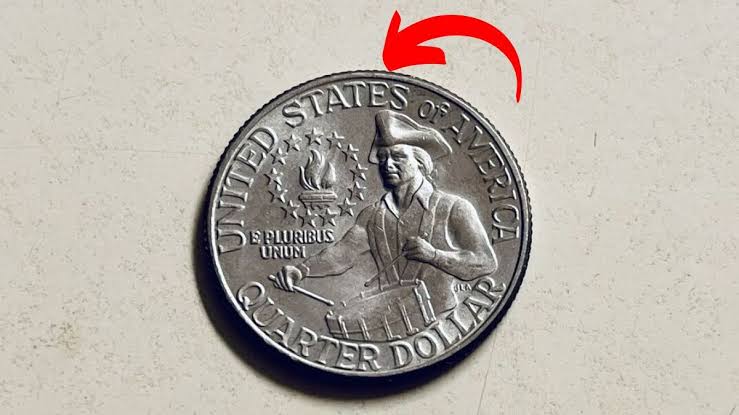The allure of discovering a rare coin in your pocket change is undeniable, and the Roosevelt Dime, potentially valued at $107,000, could be that life-changing find. First minted in 1946 to honor President Franklin D. Roosevelt, this 10-cent coin is a cornerstone of American currency. However, certain rare variations, driven by mint errors or key dates, have turned these dimes into numismatic treasures, with some even rumored to be worth millions. This guide explores the Roosevelt Dime value, key dates, errors, silver content, and how you can spot a fortune in your change. For more coin collecting insights, check out our articles on the 1964 Kennedy Half Dollar Value and Lincoln Wheat Penny Worth Billions.
What Drives Roosevelt Dime Value?
Introduced in 1946, the Roosevelt Dime features President Franklin D. Roosevelt on the obverse, commemorating his leadership and contributions to the March of Dimes. Designed by John R. Sinnock, the reverse showcases a torch flanked by olive and oak branches, symbolizing peace and strength. While most Roosevelt Dimes are worth their face value of 10 cents, rare examples—due to errors, low mintages, or pristine condition—can fetch extraordinary prices. The rumored $107,000 dime likely owes its value to a unique mint error, such as the 1975 No-S Proof, which sold for $456,000 in 2019. This possibility captivates collectors and casual enthusiasts, sparking a nationwide hunt for valuable dimes in circulation.
The Silver Advantage: Roosevelt Dime Melt Value
From 1946 to 1964, Roosevelt Dimes were struck in 90% silver and 10% copper, containing 0.07234 troy ounces of pure silver. With silver priced at $32.80 per ounce (as of May 2025), the melt value of a pre-1965 dime is approximately $2.37. This intrinsic value makes silver dimes attractive to both collectors and investors. Post-1964, the U.S. Mint transitioned to a copper-nickel clad composition due to rising silver costs, though silver proofs have been produced since 1992 for collectors.
| Silver vs. Clad Roosevelt Dimes | Silver (1946-1964) | Clad (1965-Present) |
|---|---|---|
| Composition | 90% Silver, 10% Copper | 75% Copper, 25% Nickel |
| Weight | 2.5 grams | 2.268 grams |
| Melt Value (at $32.80/oz) | ~$2.37 | Nominal |
| Collector Appeal | High (silver content) | Lower (except errors) |
Silver dimes are prized for their bullion value, but numismatic worth often surpasses this, especially for coins with Full Bands (FB), where the torch’s horizontal bands are fully struck. For comparison, the 1964 Kennedy Half Dollar also benefits from its silver content, making it another must-check coin in your change.
Roosevelt Dime Key Dates to Watch For
Certain Roosevelt Dime years and mint marks are considered key dates due to low mintages or unique production circumstances. The 1949-S, 1955, 1955-D, and 1955-S dimes are scarce, with the 1955-P having the lowest silver-era mintage at 12,450,181. The 1996-W dime, minted for the 50th anniversary of the Roosevelt Dime, is another rarity, with a mintage of 1,457,000 and only available in mint sets. In MS69 condition, it can sell for up to $400.
The 2009 Roosevelt Dime is emerging as a potential future key date. With a combined mintage of just 146 million (96.5 million Philadelphia, 49.5 million Denver), it’s far scarcer than typical years, which often exceed a billion. Collectors are advised to save 2009 dimes, as their value may appreciate significantly.
Roosevelt Dime Errors: Million-Dollar Flaws
Mint errors are a primary reason some Roosevelt Dimes command astronomical prices. Errors like missing mint marks, doubled dies, or off-metal strikes are highly sought after. The 1975 No-S Proof Dime, with only two known examples, is a prime example, valued at up to $456,000. The 1968 No-S Proof can fetch $47,000, while the 1982 No-P Dime, missing the Philadelphia mint mark, is worth $50-$75 even in circulated condition.
Notable Roosevelt Dime Errors
- 1975 No-S Proof: Missing San Francisco mint mark, valued up to $456,000.
- 1968 No-S Proof: Rare proof error, worth up to $47,000.
- 1982 No-P: Missing Philadelphia mint mark, valued at $50-$75.
- 1964-D Doubled Die Reverse: Doubling on reverse text, worth hundreds in high grades.
These errors are rare but can appear in circulation, making careful inspection worthwhile. Similarly, the Lincoln Wheat Penny has its own valuable errors, like the 1955 Doubled Die, which collectors prize.
How to Spot a Valuable Roosevelt Dime
To identify a potentially valuable Roosevelt Dime, start by checking the date and mint mark, located on the obverse near Roosevelt’s neck. Dimes from the 1940s and 1950s, particularly with “S” (San Francisco) or “D” (Denver) mint marks, are often more valuable. Examine the coin’s condition—mint state coins with no wear or those with Full Bands are highly desirable. For silver dimes, confirm their 2.5-gram weight versus 2.268 grams for clad versions. Professional grading by PCGS or NGC can authenticate and enhance a coin’s value. For instance, a 1949-S dime in EF condition might be worth $10, but in MS68 with Full Bands, it could fetch $1,650.
Roosevelt Dime Value Chart
Here’s a value chart for key Roosevelt Dime dates and errors, based on recent auctions and market trends:
| Year/Mint | Condition | Estimated Value | Notes |
|---|---|---|---|
| 1949-S | EF | $10 | Key date, low mintage |
| 1949-S | MS68 FB | $1,650 | Full Bands, rare grade |
| 1955-P | MS65 | $14 | Lowest silver mintage |
| 1968 No-S | PR68 | $47,000 | Proof error, very rare |
| 1975 No-S | PR68 | $456,000 | Ultra-rare proof error |
| 1996-W | MS69 | $400 | Anniversary issue, mint set only |
| 2009-P/D | MS65 | $1-$2 | Potential future key date |
*Values are approximate and subject to market fluctuations.
Why Valuable Dimes Remain in Circulation
The notion of a $107,000 Roosevelt Dime circulating seems far-fetched, but it’s plausible. Coins re-enter circulation through estate sales, forgotten collections, or casual spending. Silver dimes from 1946-1964, though largely hoarded by the late 1960s, still occasionally appear in change. Error coins like the 1982 No-P were released undetected, increasing their chances of being found. This reality fuels excitement, encouraging collectors to scrutinize their change for hidden treasures.
The Rise of Coin Collecting
The $107,000 Roosevelt Dime rumor has amplified interest in coin collecting. Platforms like eBay and X-based numismatic groups have democratized access to coin knowledge, enabling beginners to identify valuable finds. According to CoinWeek, silver Roosevelt Dimes are common in lower grades but scarce in high grades, making them a rewarding challenge. The hobby’s accessibility—circulated silver dimes cost $2-$3, and uncirculated MS63 sets are around $350—makes it appealing to all levels of collectors.
Pros and Cons of Collecting Roosevelt Dimes
| Pros | Cons |
|---|---|
| Affordable for beginners | Rare errors are difficult to locate |
| Silver dimes have intrinsic value | High-grade coins can be costly |
| Diverse dates and errors to collect | Requires expertise to assess value |
| Strong online collector community | Market values tied to silver prices |
Practical Steps to Find Valuable Dimes
Rather than listing steps, here’s how to hunt for valuable Roosevelt Dimes. Purchase $5 coin rolls (50 dimes) from banks and search for pre-1965 silver dimes, which are the most likely to hold value. Use a magnifying glass to inspect for errors like missing mint marks or doubled dies. Attend coin shows or join numismatic clubs to learn from experts. Investing in a reference book, such as The Cherrypickers’ Guide to Rare Die Varieties, can sharpen your skills and boost your chances of finding a gem.
External Resources for Collectors
For in-depth information on Roosevelt Dime values and errors, visit NGC Coin Explorer, a reputable source for coin grading, pricing, and variety details. This resource complements our guides on other coins, like the 1964 Kennedy Half Dollar.
Conclusion: Your Pocket Change Could Be Priceless
The prospect of a $107,000—or even $1 million—Roosevelt Dime hiding in circulation is exhilarating. Whether it’s a 1975 No-S Proof or a pristine 1949-S with Full Bands, these coins prove that extraordinary value can reside in everyday change. By understanding key dates, errors, and silver content, you can embark on a thrilling treasure hunt. Next time you receive change, inspect it closely—you might uncover a fortune. For more numismatic adventures, explore our article on the Lincoln Wheat Penny Worth Billions.















